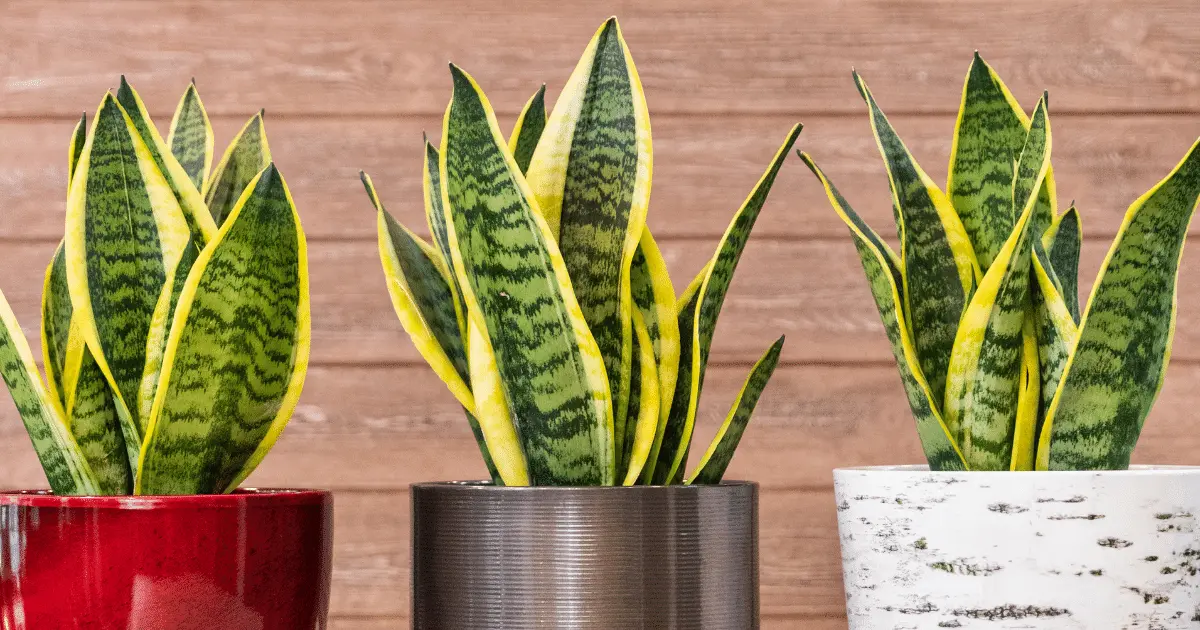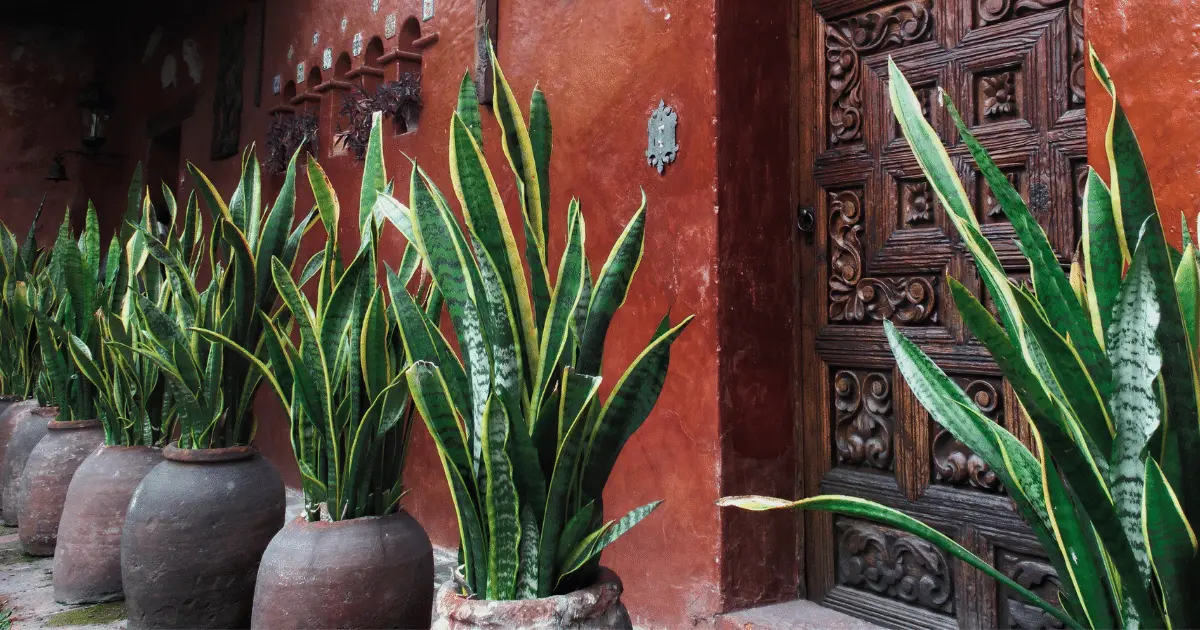I recommend the snake plant as an ideal choice for beginner gardeners because it is persistent and difficult to kill. Snake plants are great in a container and grow well on the floor or on tabletop displays. Also, they thrive in warm weather and are drought-resistant.
However, at the other end of the scale, as a snake plant gardener, you might notice your plant’s leaves turning yellow. This sign is not natural, nor shows something good; it is an issue that needs to be treated.
What Are The Causes of Snake Plant Leaves Turning Yellow?

Several things can cause snake plant leaves to turn yellow, and it would require proper and careful investigation to know what the problem is.
1. Scorching of The Sun
Nigeria across Tanzania in Africa is where the snake plant is native; here, they have adapted, growing in the shade under a forest covering and protected from direct sunlight by foliage above them. Therefore, their leaves are scorched yellow when exposed to too much sunlight.
When the plant turns yellow due to sunburn, its leaves become firmer rather than mushy. They become thinner because the plant draws upon the moisture reserves in the leaves to cope with the increase in light and heat.
Those leaves that are mostly exposed to the sun are more severely scorched yellow, while the ones that are shaded, not facing the sun directly, are less affected. These may keep their usual color.
2. Overwatering
When there is excessive moisture around the roots of your snake plant due to overwatering and slow-draining soils, its leaves turn yellow and brown and become mushy and limp.
These plants are drought resistant and permit potting soil to dry out before watering again. When consistently in damp soil, the roots rot, and the leaves turn yellow.
The snake plants originate and are grown in tropical African climates, which are hot and dry with less rainfall, having gritty, well-draining soils that keep low moisture. Too much watering or planting it in regular, unamended potting soil promotes the conditions which turn the leaves yellow, most times with a mushy texture and appear drooping.
Overwatering the soil excludes oxygen, preventing root respiration and interfering with the root’s ability to take up nutrients and moisture. Therefore, the leaves of the snake plant turn yellow.
3. Underwatering
Another cause of snake plant leaves turning yellow is underwatering. Moisture stored in the leaves of the plant keeps them plump, and if it is underwatered, it draws from the moisture reserves in the leaves, which causes them to turn yellow and wrinkle.
Typical of succulents, snake plants have adapted to life in hot and dry climates. They store water in their thick fleshy leaves in times of rainfall and survive by drawing on the moisture reserves during periods of drought.
A chronically underwatered snake plant draws upon all of its moisture reserves, turning the smooth textured leaves to a wrinkled appearance with yellowing. Eventually, this results in crispy leaves, an extreme reaction to drought stress.
4. Cold Temperatures
Some snake plants turn yellow at the base due to slow-draining soils, too much watering, and cold temperatures.
For snake plants, the soil must dry out between watering bouts and temperatures above 50°F. Stress from cold temperatures causes snake plant leaves to turn yellow at the base.
Snake plants prefer temperatures between 65 and 80°F. But, cooler temperatures cause the potting soil to dry out extremely slowly after watering, resulting in root rot and yellowing of leaves.
5. Nutrient Deficiency
The leaves will turn yellow if your snake plant is not getting enough nutrients because it needs the building blocks needed to stay healthy.
Nitrogen, potassium, phosphorus, magnesium, calcium, sulfur, iron, zinc, boron, copper, and more are extremely necessary for the growth of your snake plant and any other plant at that. When the soil lacks any of these, it will automatically not supply to the plant.
Nutrient deficiency can cause withering, drooping, and yellowing of the leaves of snake plants.
6. Fungal Diseases
Excessive watering, improper soil mixes, or pots that do not allow air circulation into the soil are primary causes of fungal infection in snake plants.
Pythium and fusarium fungi are born in the waterlogged soil and cause root rots. These fungi suck the nutrients in the soil and absorb the water in the soil, so the damaged roots can’t absorb enough oxygen and cannot function properly. Therefore, fungi damage the plant and turn the snake plant leaves yellow.
Fungus growing in the soil shows a sign of mold growth on the soil surface and plant foliage when you neglect it for a while, causing the soil mix to emit a bad smell.
Treatment of Snake Plant Leaves Turning Yellow

It is not enough to know what makes your Snake plant leaves turn yellow; knowing how to fix it is important. Here are several ways to fix it below:
1. Sunburn
To fix snake plant leaves turning yellow, move the plant to a well-shaded part of the house or garden. Any position with bright indirect light is best for recovering the snake plant.
Improve the appearance of the snake plant by pruning the tidies. Pruning will stimulate new growth and remove the scorched leaves helping the plant prioritize the growth of new, healthy green leaves.
2. Overwatering
Water the snake plant less frequently, ensuring the soil dries completely between each watering bout.
Plants should be re-potted in a mix of gritty and regular potting soil to improve drainage and oxygen access to the soil, allowing nutrients to be transported more effectively to the snake plant leaves.
3. Underwatering
If the soil has been dry for a long time, it can bake hard and repel water. So, submerge the plant’s root ball in a bucket of water for ten minutes. Doing this ensures the soil can properly absorb the water helping it reach the roots where needed.
Water snake plants very well, allowing excess water to trickle from the pot’s base. Always wait for the soil to dry before you water your plant again.
4. Cold Temperature
Put your snake plant in a room between 65 and 80°F (18°C to 27°c). Please wait until the soil has dried out before watering it again.
If the leaves turn yellow or black at the base or droop, I recommend you take cuttings from any remaining healthy leaves for propagation to save the plant.
5. Nutrient Deficiencies
An all-purpose fertilizer will solve this issue. Ensure it is appropriately balanced, having the major and micronutrients in proportion. Apply it around the soil area in specified amounts. If this is your first time using a fertilizer, follow the directions of use in the product pack.
6. Fungal Diseases
A fungicide will fix this accordingly. After spraying the fungicide on the affected areas, allow the plant to dry according to the product’s instructions.
